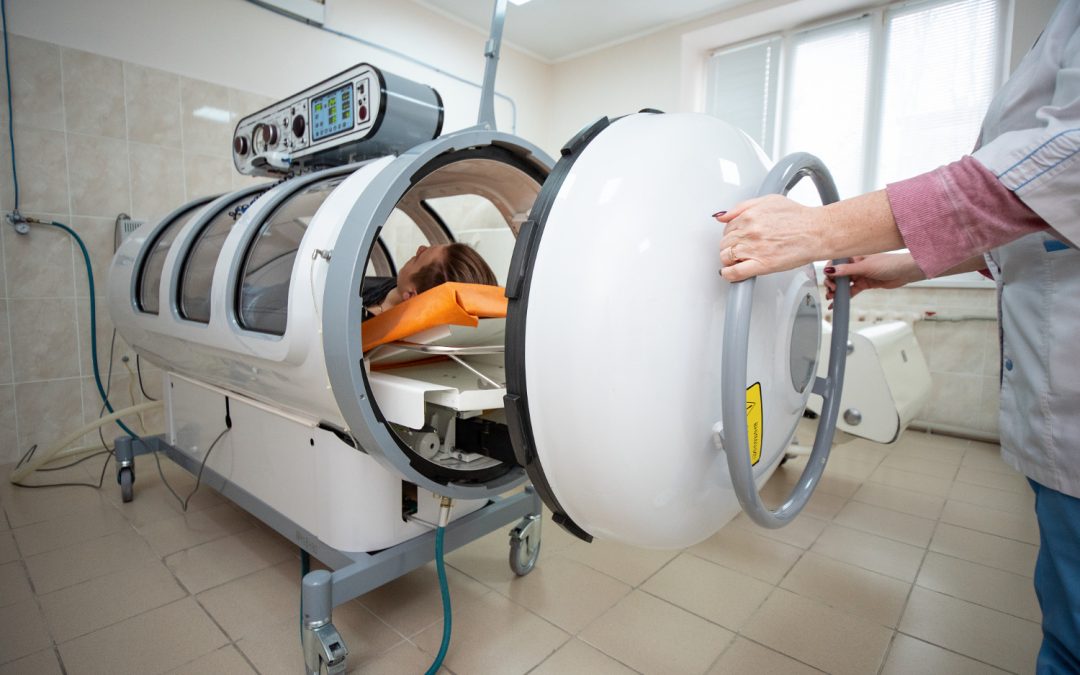Chronic wounds can be a real challenge, taking a toll on your daily life by making simple tasks difficult. But there’s hope with Hyperbaric Oxygen Therapy (HBOT). This therapy is like a notable boost for your body, using pure oxygen under pressure to help wounds heal. It’s particularly effective for wounds that refuse to heal with regular treatment, like diabetic ulcers and pressure sores.
Understanding how HBOT works and its effectiveness in treating chronic wounds is key to making an informed decision about your health. By diving deeper into the science and process of HBOT, you can see how this treatment could offer a solution to persistent wound problems.
The Basics of Hyperbaric Oxygen Therapy
Hyperbaric Oxygen Therapy (HBOT) is a unique medical treatment that involves breathing pure oxygen in a special environment. It occurs in a pressurized chamber, enhancing the body’s healing ability. This chamber increases the atmospheric pressure to higher than usual, allowing the lungs to take in more oxygen than they could at regular pressure. More oxygen reaches the blood, meaning tissues throughout the body can benefit directly.
The benefits of this treatment are vast, primarily because oxygen is crucial for healing and cell repair. By supplying more oxygen, HBOT helps repair tissues and cells, promoting faster and more effective healing. Pure oxygen can penetrate tissues more deeply, especially in poor blood circulation. This makes it particularly useful for conditions where regular healing isn’t happening as it should, such as chronic wounds and infections.
Through this enhanced oxygen delivery, HBOT supports the body’s natural healing processes, offering hope to patients whose conditions do not respond well to conventional treatments. It reduces swelling, combats infection, and promotes new tissue growth. Patients often find relief and improvement after a series of these oxygen-rich sessions, making it a valuable option for many challenging medical conditions.
The Role of HBOT in Healing Chronic Wounds
HBOT plays a significant role in healing chronic wounds, which have trouble healing over time, like diabetic ulcers or pressure sores. The key to why HBOT is so effective is its ability to increase the oxygen supply directly to the tissues that need it most. By ensuring these tissues get plenty of oxygen, HBOT helps speed up the healing process.
Oxygenated healing has several benefits. For one, the extra oxygen helps reduce swelling, often slowing healing. Less swelling means cells and tissues can repair more quickly. HBOT also boosts the body’s natural ability to fight off infections, which is crucial for wound healing.
At a cellular level, HBOT enhances the body’s wound repair mechanisms. It stimulates the growth of new blood vessels, which improves blood flow. This increased blood flow ensures tissues get the nutrients and oxygen they need to heal. It also supports collagen production, an essential component of healthy skin and tissue repair. As HBOT sessions continue, better circulation, reduced swelling, and improved cellular activity contribute to faster and more complete healing of chronic wounds.
Common Types of Chronic Wounds Treated with HBOT
Hyperbaric Oxygen Therapy (HBOT) is beneficial for various types of chronic wounds, including diabetic ulcers, pressure sores, and surgical wounds. Each wound has unique challenges, but HBOT can address them by improving tissue oxygen levels.
Diabetic ulcers are one of the most common chronic wounds treated with HBOT. These ulcers are challenging to heal because of poor blood flow and high glucose levels in people with diabetes. HBOT improves circulation and oxygen supply, promoting quicker healing. Pressure sores, or bedsores, occur when sustained pressure on the skin cuts off blood supply. HBOT reduces swelling and enhances tissue repair.
Surgical wounds that don’t heal properly also benefit from HBOT. Sometimes, after surgery, wounds remain open or infected. HBOT can help close these wounds faster by increasing oxygen delivery to the affected areas. Success stories often emphasize how these wounds, once resistant to other treatments, respond favorably to HBOT, underscoring its vital role in wound management.
Structuring an HBOT Treatment Plan for Chronic Wounds
Creating an effective HBOT treatment plan involves several factors. Treatment duration and frequency depend on the type of wound and its severity. Conditions like diabetic ulcers might require more sessions than other wounds. Physicians tailor the number of sessions based on ongoing evaluations.
A typical HBOT session involves sitting or lying in a pressurized chamber and breathing pure oxygen. Sessions last one to two hours, and patients usually require several weekly treatments. Progress is carefully monitored to adjust the treatment plan if needed.
To get the most out of HBOT, complementary care strategies can make a big difference. Maintaining good nutrition is essential. Foods rich in vitamins and minerals support wound healing. Staying hydrated and managing conditions like diabetes are also crucial. Proper wound care alongside HBOT maximizes healing outcomes, helping wounds close more rapidly.
Conclusion
Hyperbaric Oxygen Therapy offers a significant advantage in treating chronic wounds that are otherwise stubborn to heal. This therapy enhances the oxygen supply to tissues, promoting faster recovery and reduced swelling. It effectively treats chronic wounds, such as diabetic ulcers, pressure sores, and surgical wounds, by boosting natural healing processes.
Structuring a proper HBOT treatment plan involves considering factors like the wound type and severity. Regular sessions in a pressurized environment improve blood flow and oxygen delivery, which is crucial for wound healing at the cellular level. Complementary care strategies, including good nutrition and proper wound care, further enhance the benefits of HBOT.
If you want to explore how Hyperbaric Oxygen Therapy can aid in healing chronic wounds, Founding Fathers Hyperbarics offers expert guidance and personalized HBOT treatment plans. Contact us to learn how our services can support your journey to recovery and improved well-being. Don’t let chronic wounds keep you from a healthier life; explore effective solutions today.

